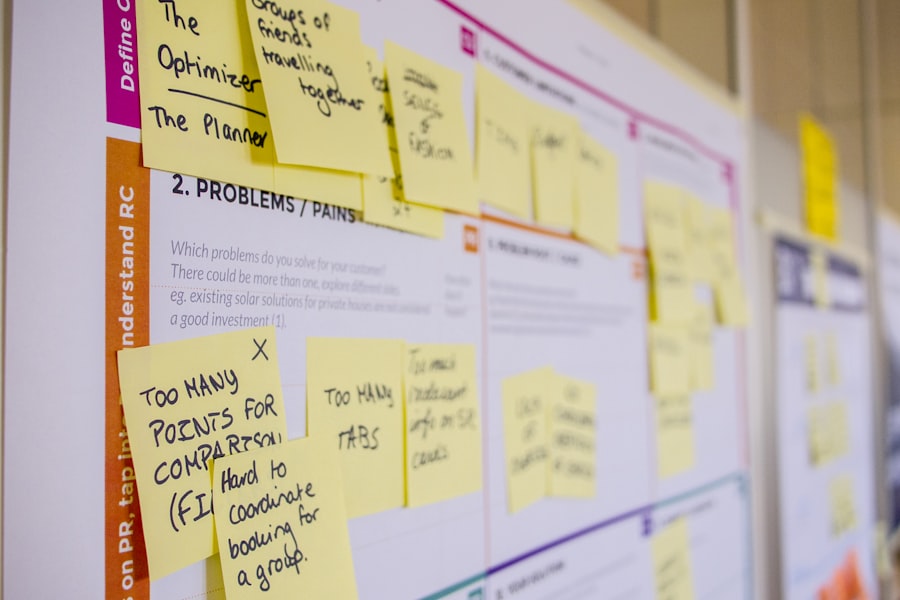To navigate the complexities of any industry, a profound understanding of the market landscape is essential. This involves not only recognizing the current trends but also analyzing historical data to predict future movements. Market research can take various forms, including surveys, focus groups, and competitive analysis.
For instance, a company looking to enter the electric vehicle market must consider factors such as consumer preferences, regulatory changes, and technological advancements. By examining competitors like Tesla and traditional automakers transitioning to electric models, businesses can identify gaps in the market that they can exploit. Moreover, understanding the market also entails recognizing the socio-economic factors that influence consumer behavior.
For example, during economic downturns, consumers may prioritize affordability over luxury features in products. This insight can guide companies in tailoring their offerings to meet the shifting demands of their target audience. Additionally, cultural trends can significantly impact market dynamics; for instance, the growing emphasis on sustainability has led many consumers to favor eco-friendly products.
By staying attuned to these shifts, businesses can position themselves strategically and ensure their offerings resonate with their intended audience.
Key Takeaways
- Thorough market understanding is essential for successful product development.
- Identifying and addressing customer needs drives product relevance and demand.
- Clear objectives guide focused and efficient development efforts.
- Utilizing technology and innovation enhances product capabilities and competitiveness.
- Continuous testing, iteration, and cross-team collaboration improve product quality and scalability.
Identifying Customer Needs
Identifying customer needs is a critical step in developing products or services that truly resonate with the target audience. This process begins with gathering qualitative and quantitative data through various methods such as interviews, surveys, and observational studies. For example, a tech company might conduct user interviews to understand pain points associated with existing software solutions.
By delving into the specific challenges users face, the company can tailor its product features to address these issues directly. Furthermore, employing tools like customer journey mapping can provide valuable insights into how customers interact with a product or service at different stages. This visual representation helps businesses pinpoint areas where customers may experience frustration or confusion.
For instance, an e-commerce platform might discover that users abandon their shopping carts due to a complicated checkout process. By simplifying this experience, the company can enhance customer satisfaction and ultimately drive sales. Understanding customer needs is not a one-time effort; it requires continuous engagement and feedback loops to adapt to changing preferences over time.
Setting Clear Objectives

Setting clear objectives is paramount for guiding a project from conception to execution. Objectives should be specific, measurable, achievable, relevant, and time-bound (SMART). For instance, a startup aiming to launch a new app might set an objective to acquire 10,000 users within the first six months post-launch.
This clarity not only provides direction but also allows for performance tracking against established benchmarks. In addition to user acquisition goals, companies should also consider objectives related to customer satisfaction and retention. For example, a business might aim for a Net Promoter Score (NPS) of 50 or higher within the first year of operation.
By establishing these metrics upfront, teams can align their efforts toward achieving these goals and make informed decisions based on data-driven insights. Regularly revisiting and adjusting these objectives in response to market feedback ensures that the organization remains agile and responsive to changing conditions.
Leveraging Technology and Innovation
| Metric | Description | Example Value | Unit |
|---|---|---|---|
| R&D Investment | Percentage of revenue invested in research and development | 8 | % |
| Innovation Adoption Rate | Percentage of new technologies adopted within the organization annually | 65 | % |
| Time to Market | Average time taken to develop and launch new products or services | 6 | Months |
| Digital Transformation Index | Score measuring the extent of digital technology integration | 78 | Out of 100 |
| Employee Training Hours | Average hours of technology and innovation training per employee per year | 24 | Hours |
| Patent Filings | Number of patents filed related to new technologies and innovations annually | 15 | Count |
| Automation Rate | Percentage of business processes automated using technology | 40 | % |
In today’s fast-paced business environment, leveraging technology and innovation is crucial for maintaining a competitive edge. Companies must stay abreast of emerging technologies that can enhance their operations or improve customer experiences. For instance, artificial intelligence (AI) has transformed various industries by enabling personalized marketing strategies and automating customer service through chatbots.
A retail company utilizing AI can analyze customer data to recommend products tailored to individual preferences, thereby increasing conversion rates. Moreover, innovation is not limited to product development; it also encompasses process improvements that enhance efficiency and reduce costs. For example, adopting cloud-based project management tools can streamline collaboration among team members, regardless of their geographical locations.
This flexibility allows for real-time updates and communication, fostering a more dynamic work environment. Companies that embrace technological advancements are better positioned to adapt to market changes and meet evolving customer expectations.
Streamlining the Development Process
Streamlining the development process is essential for bringing products to market efficiently while maintaining high quality. Implementing methodologies such as Agile or Lean can significantly enhance productivity by promoting iterative development and continuous feedback. For instance, an Agile approach allows teams to break down projects into smaller increments, enabling them to respond quickly to changes in requirements or market conditions.
Additionally, employing tools like Kanban boards can help visualize workflow and identify bottlenecks in the development process. By tracking tasks in real-time, teams can prioritize effectively and allocate resources where they are most needed. This proactive approach not only accelerates time-to-market but also fosters a culture of accountability among team members.
Companies that prioritize streamlined development processes are more likely to deliver innovative solutions that meet customer needs promptly.
Collaboration and Cross-Functional Teams

Collaboration across cross-functional teams is vital for fostering creativity and ensuring diverse perspectives are considered during product development. Bringing together individuals from various departments—such as marketing, engineering, design, and sales—can lead to more holistic solutions that address multiple facets of a problem. For example, when launching a new product, input from marketing can inform design choices that resonate with target audiences while engineering can provide insights into feasibility.
Moreover, fostering an environment of open communication encourages team members to share ideas freely without fear of criticism. Regular brainstorming sessions or workshops can facilitate this exchange of ideas and lead to innovative solutions that may not have emerged in siloed environments. Companies that embrace cross-functional collaboration often find that they can solve complex challenges more effectively and create products that are well-rounded and market-ready.
Testing and Iterating
Testing and iterating are critical components of the product development lifecycle that ensure offerings meet customer expectations before full-scale launch. Prototyping allows teams to create early versions of their products for user testing, gathering valuable feedback on functionality and usability. For instance, a software company might release a beta version of its application to a select group of users who can provide insights into bugs or features that need improvement.
The iterative process involves making adjustments based on user feedback and retesting until the product aligns with customer needs and expectations. This cycle of testing and refinement not only enhances product quality but also builds trust with customers who feel their input is valued in shaping the final offering. Companies that prioritize this iterative approach are more likely to launch successful products that resonate with their audience and achieve long-term success.
Launching and Scaling Up
The launch phase is a critical juncture where all previous efforts culminate into bringing a product or service to market. A well-executed launch strategy encompasses various elements such as marketing campaigns, public relations efforts, and promotional activities designed to generate buzz around the new offering. For example, a tech startup might leverage social media platforms to create anticipation through teaser campaigns leading up to the launch date.
Once the product is launched successfully, scaling up becomes the next challenge. This involves expanding market reach while maintaining quality and customer satisfaction. Companies may explore partnerships or collaborations with other businesses to tap into new customer segments or geographic markets.
Additionally, investing in infrastructure—such as supply chain enhancements or customer support systems—can facilitate growth without compromising service levels. Organizations that approach scaling strategically are better equipped to navigate the complexities of growth while ensuring their offerings continue to meet evolving customer needs.




